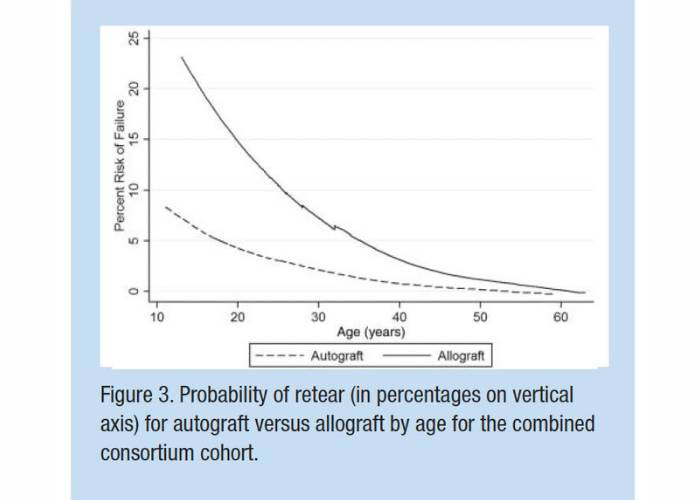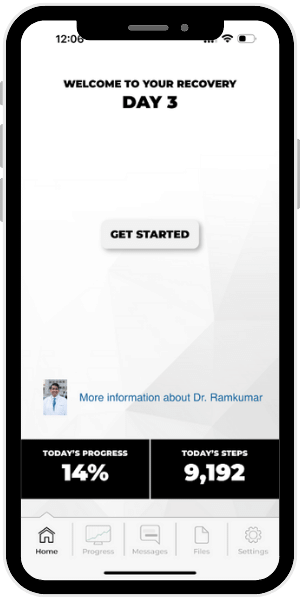ACL Reconstruction Surgeon
If you have torn or injured your ACL and want the best chance at returning to sport or full activity, you need to see an experienced ACL surgeon. Doctor Prem N. Ramkumar has the experience and expertise in performing ACL Reconstruction surgery for patients in Los Angeles, Orange County California and the surrounding areas who are in need of ACL reconstruction. Contact Dr. Ramkumar’s team today!

What is an ACL injury or tear?
The anterior cruciate ligament, known as the ACL, is one of the four main ligaments in the knee. Although ACL injuries may be described along a spectrum (sprain, partially torn, or completely torn), the ACL is either functional or not. If you’re diagnosed with an ACL injury, the ligament attaching the tibia (shin bone) to the femur (thigh bone) has either become loose or has stretched beyond the normal range and no longer provides stability. Not all ACL tears need surgery, but reconstructing the ACL can help restore the ability to pivot, cut, and react quickly. Additionally, reconstructing the ACL helps prevent further articular cartilage and meniscus injury.
What is ACL Reconstruction?
Anterior cruciate ligament (ACL) reconstruction is a minimally invasive surgical procedure where the surgeon replaces the entire ACL with a tissue graft.
Two types of grafts can replace the injured ACL. They are:
- Allograft – Tissue harvested from a donor. For younger patients, this is not preferred as the risk of ACL re-rupture is high.
- Autograft – Tissue harvested from the patient. This is the preferred method and there exist several options: quadriceps tendon, patellar tendon, and hamstring tendon.
Dr. Prem N. Ramkumar, orthopedic knee surgeon, is located in Long Beach and serves the Los Angeles, Orange County, and surrounding Southern California areas and treats patients who have been diagnosed with an ACL tear and are in need of ACL reconstruction surgery.
Allograft -Vs- Autograft ACL Reconstruction: Predictors of Failure
In simple terms, this study shows that using a graft from another person (donor or cadaver tissue, also known as allograft) for ACL reconstruction is four times more likely to result in graft rupture compared to using a graft from your own body (autograft). Additionally, for every decrease of 10 years in age, the chances of graft rupture increase by 2.3 times.

How is ACL Reconstruction Done?
Anterior cruciate ligament (ACL) reconstruction surgery is a minimally invasive procedure, often done arthroscopically, with only a few small incisions to the knee. Dr. Ramkumar uses a special camera and instruments to remove the damaged ACL and replace it with a tissue graft, already harvested from the patient or a donor.
Dr. Ramkumar drills small holes into the tibia (shin bone) and femur (thigh bone), so he can anchor the graft. Once the graft is in place, Dr. Ramkumar will check the knee’s range of motion and make sure the graft is secure. Any other issues are addressed at the time of surgery, such as meniscus or articular cartilage tears.
The camera and instruments come out of the knee, and the small incisions are closed with stitches or steri-strips. The knee is dressed and then immobilized with a brace.
Typically the procedure is outpatient or day surgery, and the patient can go home the same day with pain medication and instructions to ice and elevate the knee to prevent swelling.

What is the Recovery Like After ACL Reconstruction?
The time it takes to recover from ACL reconstruction surgery depends on the patient, their goals, how well they follow post-surgical instructions, how they progress with rehabilitation, and any other procedures performed. Patients with a simple ACL reconstruction begin physical therapy about a week after surgery and usually return to work or school in about five days. It is common to be in a knee brace one to two weeks and use crutches between two to three weeks. Dr. Ramkumar will specify your specific protocol. The first three months will be predominantly focused on rehabilitation. Between three and six months, the focus will shift to strengthening. Between six and nine months, the focus will shift to sports-specific activities to prepare for return to sport.


